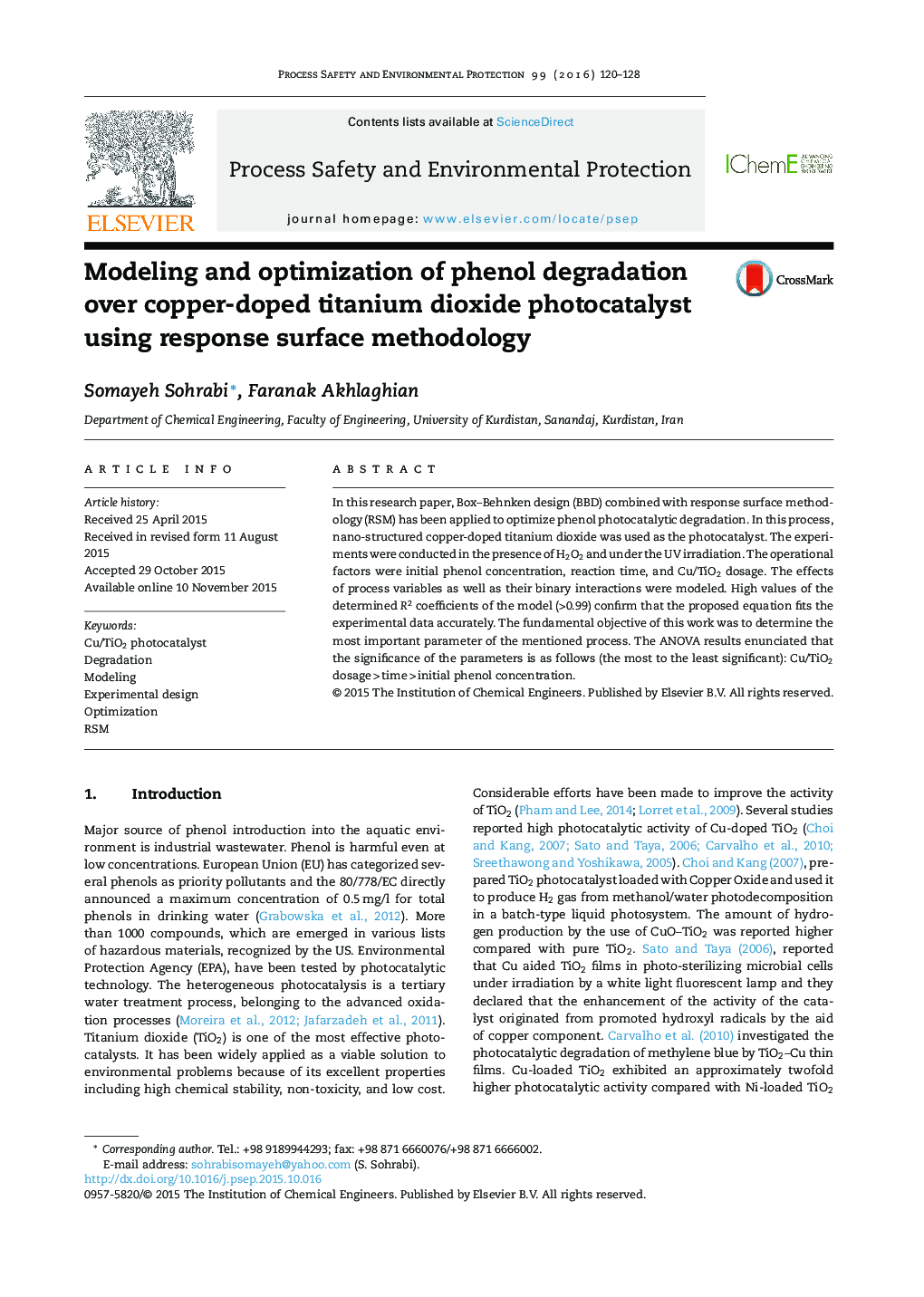| کد مقاله | کد نشریه | سال انتشار | مقاله انگلیسی | نسخه تمام متن |
|---|---|---|---|---|
| 588199 | 1453339 | 2016 | 9 صفحه PDF | دانلود رایگان |
• Cu/TiO2 catalyst is synthesized by sol–gel method.
• Box–Behnken Design was applied to investigate the influences of factors on phenol photocatalytic degradation.
• ANOVA results showed the significance of the interactive effects.
• The catalyst loading is the most significant parameter.
In this research paper, Box–Behnken design (BBD) combined with response surface methodology (RSM) has been applied to optimize phenol photocatalytic degradation. In this process, nano-structured copper-doped titanium dioxide was used as the photocatalyst. The experiments were conducted in the presence of H2O2 and under the UV irradiation. The operational factors were initial phenol concentration, reaction time, and Cu/TiO2 dosage. The effects of process variables as well as their binary interactions were modeled. High values of the determined R2 coefficients of the model (>0.99) confirm that the proposed equation fits the experimental data accurately. The fundamental objective of this work was to determine the most important parameter of the mentioned process. The ANOVA results enunciated that the significance of the parameters is as follows (the most to the least significant): Cu/TiO2 dosage > time > initial phenol concentration.
Journal: Process Safety and Environmental Protection - Volume 99, January 2016, Pages 120–128
